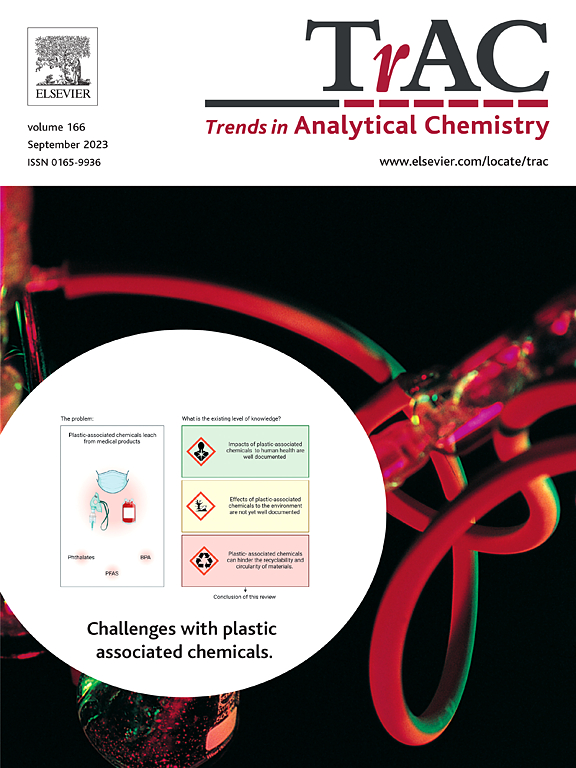Molecularly imprinted polymers meet sensors: Insights and prospects for pollutants analysis
IF 11.8
1区 化学
Q1 CHEMISTRY, ANALYTICAL
引用次数: 0
Abstract
Sensors offer several outstanding properties, including ease of operation, rapid response times, portability, and the ability to perform real-time analysis, driving their rapid development and broad applications. Among these, molecularly imprinted polymers (MIPs)-based sensors stand out due to their unique capability to modify sensor surfaces by creating recognition cavities in the polymer matrix. This approach offers a versatile methodology for imprinting various pollutants, providing a fast, sensitive, user-friendly, and highly selective sensing platform. MIPs-based sensors are especially attractive due to their excellent physicochemical stability, low cost, and reusability. Currently, a variety of sensors integrated with MIPs—such as fluorescent sensors and electrochemical sensors-have been developed for the detection and identification of trace biological macromolecules, organic pollutants, and heavy metal ions. This review explores the different types of MIPs-based sensors, their latest applications in pollutant detection, and highlights the challenges, limitations, and future directions for the development of these advanced sensing technologies.
分子印迹聚合物与传感器的结合:污染物分析的启示与前景
传感器具有操作简便、响应速度快、便于携带以及能够进行实时分析等突出特性,推动了传感器的快速发展和广泛应用。其中,基于分子印迹聚合物(MIPs)的传感器因其通过在聚合物基体中创建识别空腔来修饰传感器表面的独特能力而脱颖而出。这种方法提供了印迹各种污染物的通用方法,提供了一个快速、灵敏、用户友好和高选择性的传感平台。基于 MIPs 的传感器具有出色的理化稳定性、低成本和可重复使用性,因此特别具有吸引力。目前,已开发出多种与 MIPs 集成的传感器,如荧光传感器和电化学传感器,用于检测和识别痕量生物大分子、有机污染物和重金属离子。本综述探讨了不同类型的 MIPs 传感器及其在污染物检测中的最新应用,并重点介绍了这些先进传感技术面临的挑战、局限性和未来的发展方向。
本文章由计算机程序翻译,如有差异,请以英文原文为准。
求助全文
约1分钟内获得全文
求助全文
来源期刊

Trends in Analytical Chemistry
化学-分析化学
CiteScore
20.00
自引率
4.60%
发文量
257
审稿时长
3.4 months
期刊介绍:
TrAC publishes succinct and critical overviews of recent advancements in analytical chemistry, designed to assist analytical chemists and other users of analytical techniques. These reviews offer excellent, up-to-date, and timely coverage of various topics within analytical chemistry. Encompassing areas such as analytical instrumentation, biomedical analysis, biomolecular analysis, biosensors, chemical analysis, chemometrics, clinical chemistry, drug discovery, environmental analysis and monitoring, food analysis, forensic science, laboratory automation, materials science, metabolomics, pesticide-residue analysis, pharmaceutical analysis, proteomics, surface science, and water analysis and monitoring, these critical reviews provide comprehensive insights for practitioners in the field.
 求助内容:
求助内容: 应助结果提醒方式:
应助结果提醒方式:


